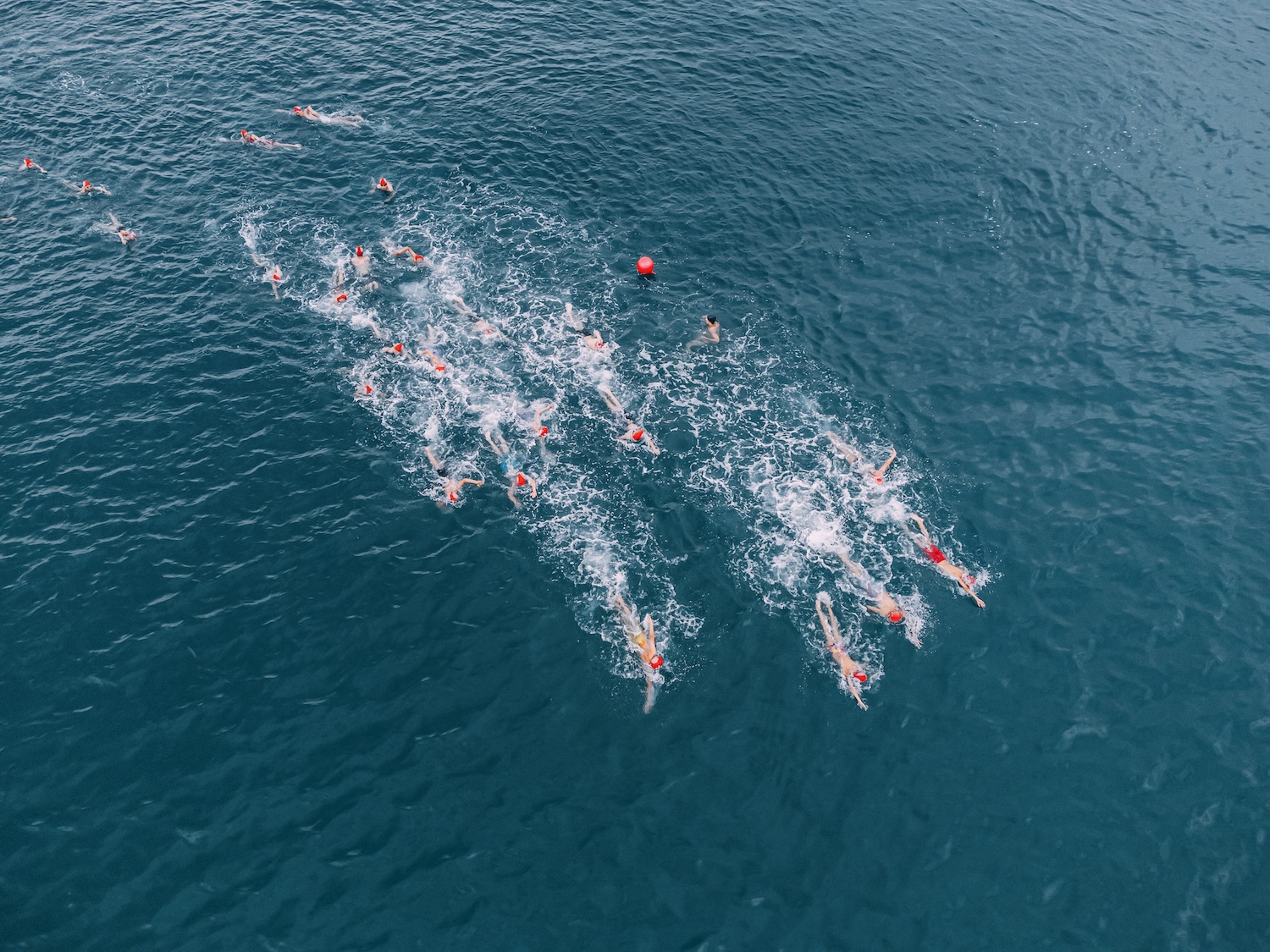Open water swimming is such an exciting challenge, but picking the right race can make a huge difference in how much fun you have (and how well you do!). With so many options out there, it’s important to think about things like location, race length, water temperature, and conditions before you sign up. Whether you're just starting out or looking to take on something more challenging, here’s a simple guide to help you choose the perfect open water swim race for you.

Where your race is held will have a big impact on what you’ll be swimming through—water temperature, quality, and overall state of the water. Ideally, pick a race that’s close by so you can avoid the stress of rushing around the morning of the event. You’ll want to feel calm and relaxed, not scrambling to get to the starting line. Do a little research on the area beforehand to know what to expect. For example, if it’s in the sea, you might have to deal with unpredictable tides and waves. If it's a lake or river, the water could be much calmer.

Open water races vary in distance—some are only a few hundred meters, while others stretch for several kilometers. If you’re new to this, it’s a good idea to start with a shorter race and work your way up over time. While open water can be easier in some ways (saltwater is more buoyant, and wetsuits are pretty fast), there are plenty of factors that can make it trickier. Things like choppy water, strong currents, or swimming in a crowded pack can make open water swimming much more challenging than what you’re used to in the pool. So, start small and gradually increase the distance as you gain more confidence.

Water temperature is key when choosing a race. Organizers usually post the expected water temperature on their website and often give recommendations on what gear you’ll need. If the water is cold, you’ll want a wetsuit to help keep you warm and float a little easier. If it’s really cold, consider adding neoprene gloves or a hood to keep those extremities warm. Make sure to double-check the water temp ahead of time, so you’re prepared with the right gear.

How calm or rough the water is can make a big difference in your race experience. Lake and river swims are usually more relaxed, especially if you’re swimming with the current. But sea swims can be much more choppy, which can throw off your stroke timing and mess with your breathing. If you know the race will have rough water, try to get in some practice in similar conditions before race day. It’ll help you feel more comfortable and get used to how to handle the waves.

Saltwater is more buoyant than freshwater, so you may feel like you’re floating a little easier and swimming faster in the sea. But if you’re not used to it, and the conditions get rough, taking an accidental gulp of salty water isn’t exactly pleasant. Think about whether you’re more comfortable with the idea of swimming in the sea or a freshwater lake, and choose accordingly.

Some races take place in areas with currents or river flows, which can make things interesting (or tricky!). You might swim with the current for part of the race, which can help you move faster, but there may be sections where you’re swimming against the current, which can slow you down. If you’re swimming in a race with a current, it’s a good idea to be aware of how it could affect your swim. For example, in races like the Dart 10k in Devon, the strong river current can make the race feel more like swimming a 7k instead of the full 10k distance, which is something to keep in mind.

There’s a lot to think about when choosing an open water swim race, but if you’re just getting started, try to go for shorter, calmer races in warmer waters with no current. As you get more comfortable, you can start challenging yourself with tougher conditions. Just don’t rush into a race that feels like too much of a leap all at once. Build your experience slowly and enjoy the process!
Open water swimming is an awesome way to challenge yourself and have fun, and with the right race, you’ll be ready to take it on with confidence. Happy swimming!
Check out our race finder here, we have categorised races as novice, intermediate or advanced, factoring in all the points made above to help guide you.




Sign up to Catch Free
You’ll get access to the online swim community with training session ideas, mini courses, a swim content hub & local swim squad.
Get Free Access Now